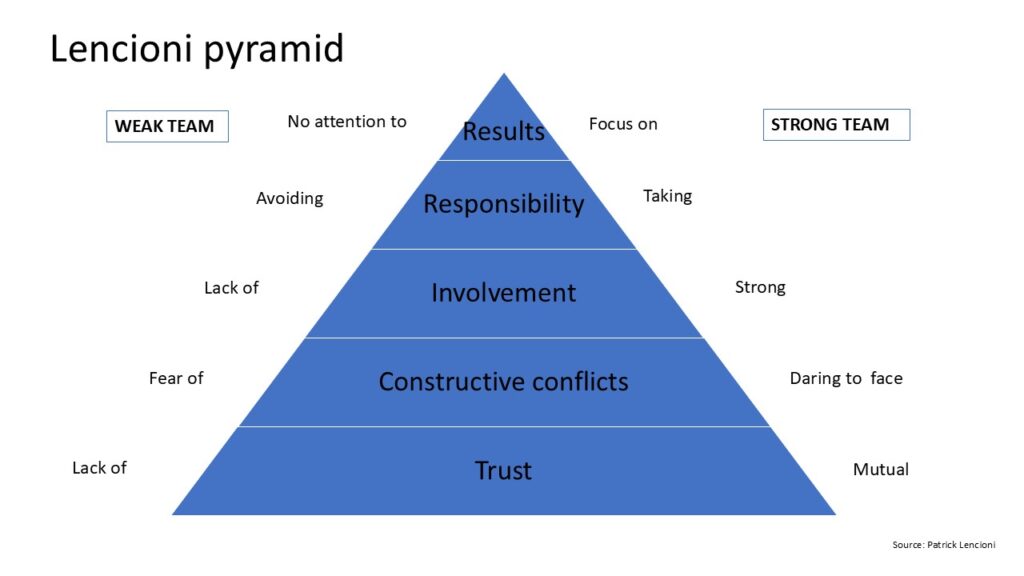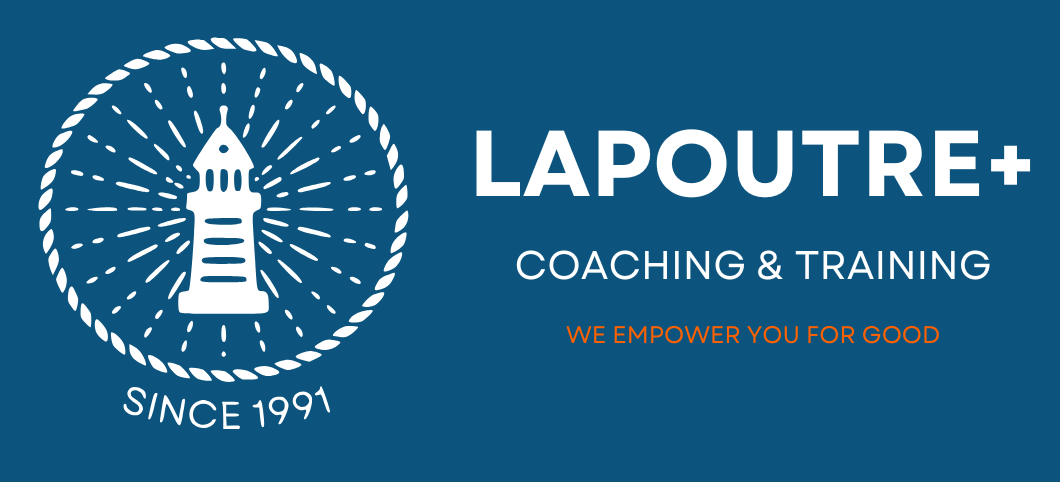Lencioni’s pyramid: team effectiveness
When assessing teams, we like to use Lencioni’s pyramid, which shows the five most crucial success factors of strong teamwork and provides insight into its most essential threats.
The bottom layer of the pyramid is about trust and daring to be vulnerable. The absence of mutual trust is often the biggest bottleneck in teams that do not function well.
The next layer of the pyramid is about being able to have conflicts constructively. If this does not work in a team, there is often gossip, unspoken fuss, and political games, which creates a toxic team environment.
The middle layer of the pyramid is about commitment, where the most significant threat is ambiguity. It is imperative that expectations are clear to all parties and that everyone is on the same page because nothing is as damaging as not keeping agreements, and it is a shame if the reason for this is that it was not clear what the intention was.
The next layer is about taking responsibility for your own attitude, behaviour and performance and giving and receiving feedback in this context. In case of friction, it is crucial to engage in a constructive conversation and to address each other in relation to undesirable behaviour in order to improve team performance.
The top layer is about the willingness and ability to make personal interests subordinate or as important as possible to the team interest. Competitive behaviour and individual rewards can work very well in increasing individual performance, but if this happens within a team, there is a risk that team members will start to compete ‘against each other’ in order to win themselves.

